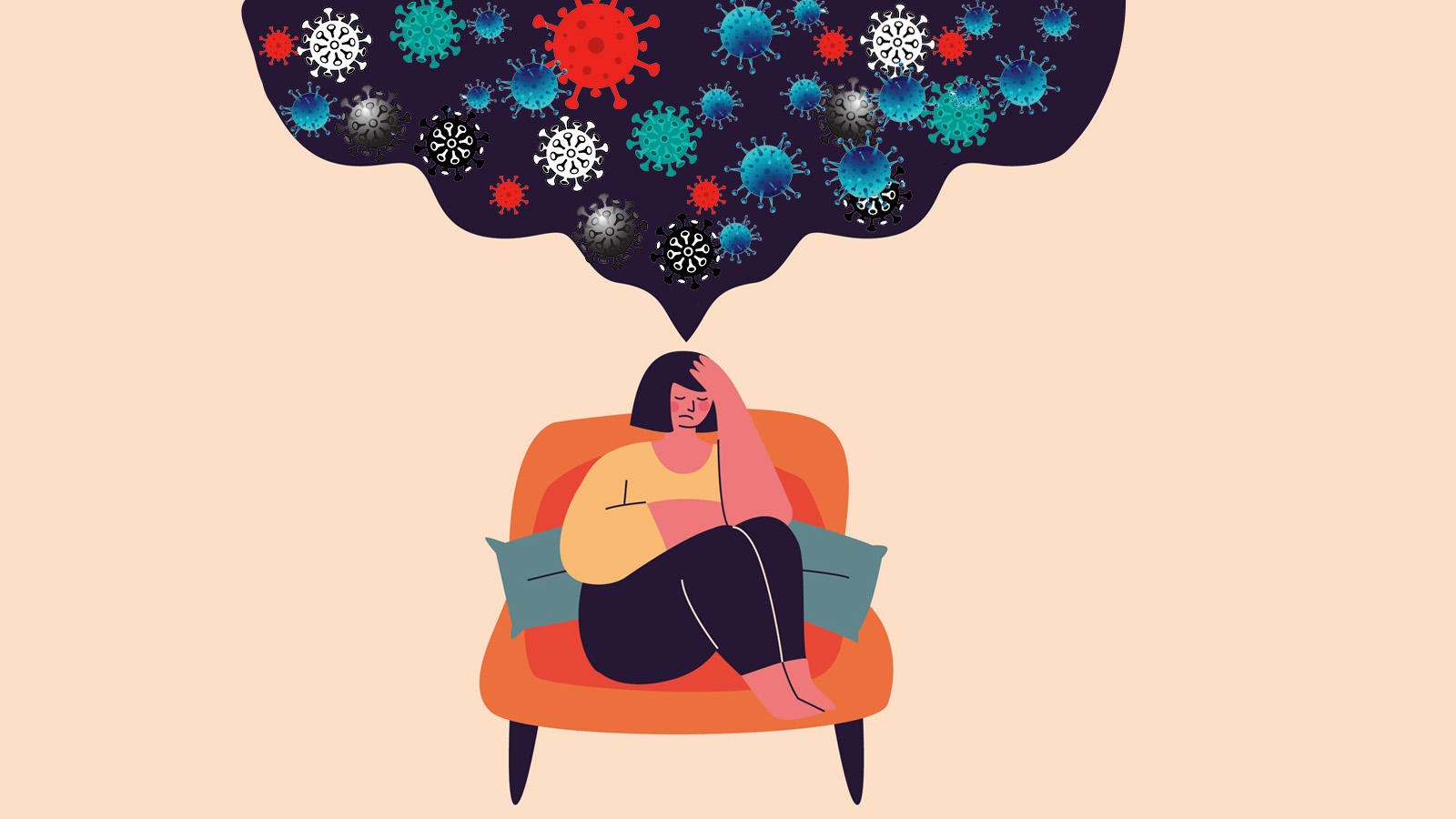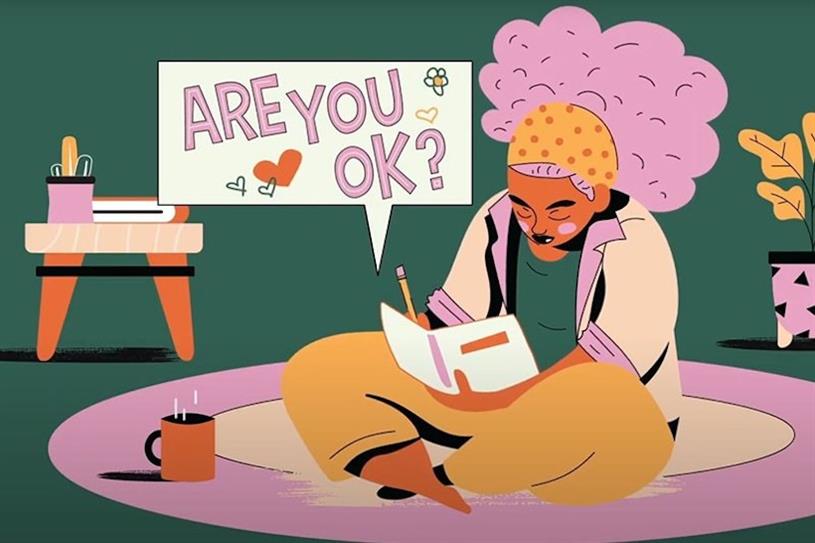Nothing has remained the same since the World Health Organisation officially declared Covid-19 as a pandemic in March last year. The devastating impact has been unanimously felt across the world. India is yet to recover from the repercussions of the second wave, while the possibility of the third wave looms large on us. The pandemic induced social distancing, isolation, bereavement through loss and grief have taken an undeniable toll on the mental health of most people.
The inwardness and constant lockdowns have triggered mental health and aggravated existing difficulties in people. Many people have also developed anxiety, depression and other critical mental health conditions due to the pandemic and its alterations to our social life.

People with social phobia are highly misjudged by the society. A socially anxious person is often dismissed as “too shy”, “lacking confidence”, “an overthinker” or “an introvert”. But the symptoms of social anxiety go beyond such stereotypes. The sweatiness, nausea, rigidity in postures, difficulty in holding a conversation with others and consequential reluctance to be in a public place are all born out of fear and anxiety
For the ones who were already anxious about social interactions, the lockdowns and restricted engagements have impacted differently. Social anxiety disorder or social phobia is a condition that makes an individual extremely nervous in public spaces. They are constantly in the fear of being judged by everyone else, so much that it obstructs their social interactions.
The lockdowns and social distancing, the socially anxious have found some solace in the “new normal”. With the shift from offline spaces to online screens, they have found the world to be less suffocating, but the emotional turmoil of people who battle social anxiety is not talked about enough in public forums.
“Flaky” and other stereotypes of the socially anxious
Social anxiety disorder or social phobia is much more than just shyness. It is the fear of being in a social setting, with people around. Venturing out into the public for people dealing with social anxiety is like going through a haunted house. Transcending the familiarity of the place, you don’t know when the fear will creep in and, anxiety will take over. It is the fear of being constantly watched and judged by others. It is an emotion that is uncontrollable.
People with social phobia are highly misjudged by the society. A socially anxious person is often dismissed as “too shy”, “lacking confidence”, “an overthinker” or “an introvert”. But the symptoms of social anxiety go beyond such stereotypes. The sweatiness, nausea, rigidity in postures, difficulty in holding a conversation with others and consequential reluctance to be in a public place are all born out of fear and anxiety. It is an involuntary physical feeling of danger in one’s body that arises out of being in a social setting.

Socially anxious people are also commonly labelled as “flaky” for cancelling plans in the last minute. But what others fail to understand is that they have no control over such sudden emotions and thoughts that amplify their sense of fear as they inch closer towards an event that demands them to step out and meet people.
Also read: Online Therapy: The Struggles Of Communicating Distress Without Physical Presence
Masks, isolation, lesser social interactions: Impact of the pandemic
The pandemic has affected most people emotionally, and this has led to a collective increase in our sense of empathy to some extent. Anxious people feel that their thoughts are understood by the larger public for the first time and that they are perhaps not alone in their journey.
Aritra Chatterjee, a trans-feminine trainee in Clinical Psychology at the University of Calcutta, who has been practicing for two years now, says, “For people with social anxiety, the pandemic has perhaps cushioned them against face to face interactions and social encounters. Additionally, home isolation allows people with social anxiety a convenient comfort zone to settle into without having to confront their fears of criticism, ridicule or rejection in social circles from which the anxiety mostly stems.”
“The pandemic induced isolation can also reduce the cognitive load that people with social anxiety often experience before stepping into social situations. Moreover, in virtual encounters there is relatively more anonymity and screen-separation, which may also facilitate virtual social interactions,” she adds.

The harrowing experience of venturing out into the public has also been helped by face masks that allow “limited facial feedback in terms of emotional responsiveness of others.” Aritra opines that this “in itself can be relaxing and make social situations more tolerable” for the socially anxious.
However, this isn’t a simple black and white affair. The long gap in restricted social interactivity is bound to have serious implications on the health of anxious people. With the shift from offline to online modes, mental health services have been disruptive as well. Online therapy sessions defy the purpose of going to therapy for many people. Therapy provides a sense of belongingness and creates a safe space for those dealing with mental illness, and most people find it difficult to open up through a non-personal, digital medium.
Even though the vaccine rollout has put an ease on lockdowns and restrictions, most people, especially anxiety survivors are apprehensive of venturing out into the public even after being inoculated.The anxiety about going back to public spaces after such prolonged cut down is also called the cave syndrome
In this regard, Aritra adds, “One very important challenge with the shift from offline to online modes is it limits the scope of face to face observation which is a very important aspect of clinical decision-making.” On the question of whether socially anxious people undergoing treatment prefer the online media or not, she says, “I think that it would be unreasonable to draw such a convenient conclusion, but it can be a possibility.” She firmly believes, “A lot of important clinical input is often lost in virtual interactions and it might often be more prudent to combine them with at least a single in-person session to guide clinical decision-making with clarity and precision.”

Even though the vaccine rollout has put an ease on lockdowns and restrictions, most people, especially anxiety survivors are apprehensive of venturing out into the public even after being inoculated. The anxiety about going back to public spaces after such prolonged cut down is also called the cave syndrome.
It is difficult to look beyond the repercussions of the ongoing pandemic, but if we are to think about a post-pandemic social setting, it would be nothing short of a difficult and distressing time for those battling social phobia. In this regard, Aritra mentions, “Due to such a shift in lived realities, the degree of prior adaptation to in-person interactions maybe lost as well, producing more social dysfunction in a post-pandemic setting.”
This is proving to be a difficult time for all of us. Lack of mental health sensitivity invalidates the socially anxious, dismissing the legitimacy of their emotions. Dealing with social anxiety is hard enough and, socially phobic individuals need support, empathy and less of our judgment.
Also read: Pandemic And The Internet: How Virtual Platforms Helped Me Find Joy Amidst Lockdowns
About the author(s)
Rohini Ghosh is an aspiring journalist and a postgraduate Mass Communication student at St. Xavier's University, Kolkata. An intersectional, queer feminist at heart, she is deeply interested in gender and social issues




